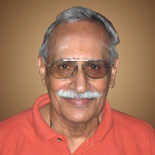|
Go to Part 18 VEDANTA HAS TO BE LEARNT FROM A QUALIFIED GURU II – The guru must know the traditional teaching and its methods The Upaniñads and the teachers in the tradition use a number of methods to communicate the vision of Vedänta [132]. No teaching is required to prove the existence of ätmä, as it is self-evident. We know that we exist. The teaching has to handle only our deeply ingrained incorrect understanding of it. When we say, “I am the conscious body-mind-sense-complex”, we have lumped together what is ätmä with what is not ätmä. The latter is called anätmä. The job of the Upaniñads and the teaching methods is to convince us as to what is anätmä so that we can have correct understanding of ätmä by mentally separating anätmä from our existing notion and also know the relationship between the two.
The basic technique adopted is to start from the incorrectly known mixture of ätmä and anätmä and negate systematically all anätmäs so that ätmä is known correctly. The anätmä component is called as adhyäropa, or super-imposition. When the anätmä is negated through knowledge, it is called apaväda or negation. The whole process is correction of error through knowledge. The steps of removal of error are gradual. So, we have to be properly led by the guru so that we may reach the final destination. This is the basic technique of adhyäropa-apaväda.
This situation of revealing through negation in gradual steps is similar to the seeing of the star called Arundhaté. This star is close to the star Vasiñöha and is too small to be easily perceived. Even Vasiñöha is difficult to see. During the marriage ceremony, the bride has to see Arundhaté to emulate her since Arundhaté and her husband Vasiñöha are the ideal couple who have been immortalized as stars. For this purpose, the moon, which is easily seen, is taken as the starting point for her and her vision is shifted from the moon to the group of seven stars. From here, her vision is shifted to Vasiñöha. Once Vasiñöha is reached, then Arundhaté can be seen as the barely visible star closest to it [133].
The teaching methods play the crucial role in the unfolding of the knowledge. The methods, which would be discussed in detail later, are:
The other technique is to reveal the extra-ordinary through the ordinary by employing our ability to know through attributes. So, it uses the apparent and incidental attributes of Brahman-ätmä to know it. Even as the sky is known through the apparent attribute of blueness, the self is revealed through it being apparently the witness of everything. The sentience of the insentient body and mind is used to know consciousness, which is ätmä. Existence of the world is used to know existence, which is Brahman [138] . But to explain the attributeless through attributes require skillful handling of the methods adopted for the purpose by the Upaniñads. For example, we should not end up by making the mistake that Brahman is of two kinds, one with attributes and the other without attributes.
Only when the guru has been taught by his guru according to the tradition (sampradäya), he would know the teaching methods and would be able to handle them properly to communicate the knowledge. He would be careful not to use words in a manner that would lead to forming of wrong conclusions. He would also ensure that his teaching does not create concepts. Concepts are an obstacle to removal of self-ignorance since we are not trying to know an unknown entity through conceptualization but to recognise an existing fact. He would mention specifically whatever misconceptions are possible and negate them. He would answer fully the questions asked and clear the doubts. He would try to resolve all doubts as the intellect will never accept anything fully even if there is the least trace of doubt about it.
Çaìkaräcärya places great stress on the sampradäya by specifically warning against learning from scholars who, though well read in the çästra, imagine what is not stated in it and misinterpret it. He also says that while they themselves have gone astray, they delude others also. So, he declares that even when a person is well versed in all çästras, he deserves to be rejected as an ignoramus, if he is ignorant of the sampradäya [139].
We have also to learn from a live guru since the teaching has to be personal, as our strength and weakness in learning are different. Knowing us enables the teacher to appropriately handle the subject to communicate the teaching to us. He has also to be readily available to clear our doubts. 132.The methods are called as prakriyäs. Go to Part 20
|
|||
|
|||


www.advaita.org.uk
Advaita for the 21st Century



Vedanta - Part 19
VEDĀNTA the solution to our fundamental problem
D. Venugopal

D. Venugopal is a student of Swami Paramarthananda and a direct disciple of Pujya Swami Dayananda. He has successfully completed the long-term residential course in Vedanta and Sanskrit conducted from May 2002 to July 2005 at the Arsha Vidya Gurukulam, Anaikatti.
Go to CONTENTS
Biography
Buy from Amazon UK
. Available from Bharatiya Vidya Bhavan centers at London, New York and Sydney.
. Also through the IBH Books & Magazines Distributors Pvt. Ltd. - contact contact@ibhworld.com. In case of difficulty,pvsankarankutty@bhavan.info can be contacted.
BOOK DETAILS
Publisher: Bharatiya Vidya Bhavan
ISBN: 978-81-7276-457-9
Format : Paperback
Pages: 324
List Price: US$7.00
Where to Buy
AUTHOR DETAILS

